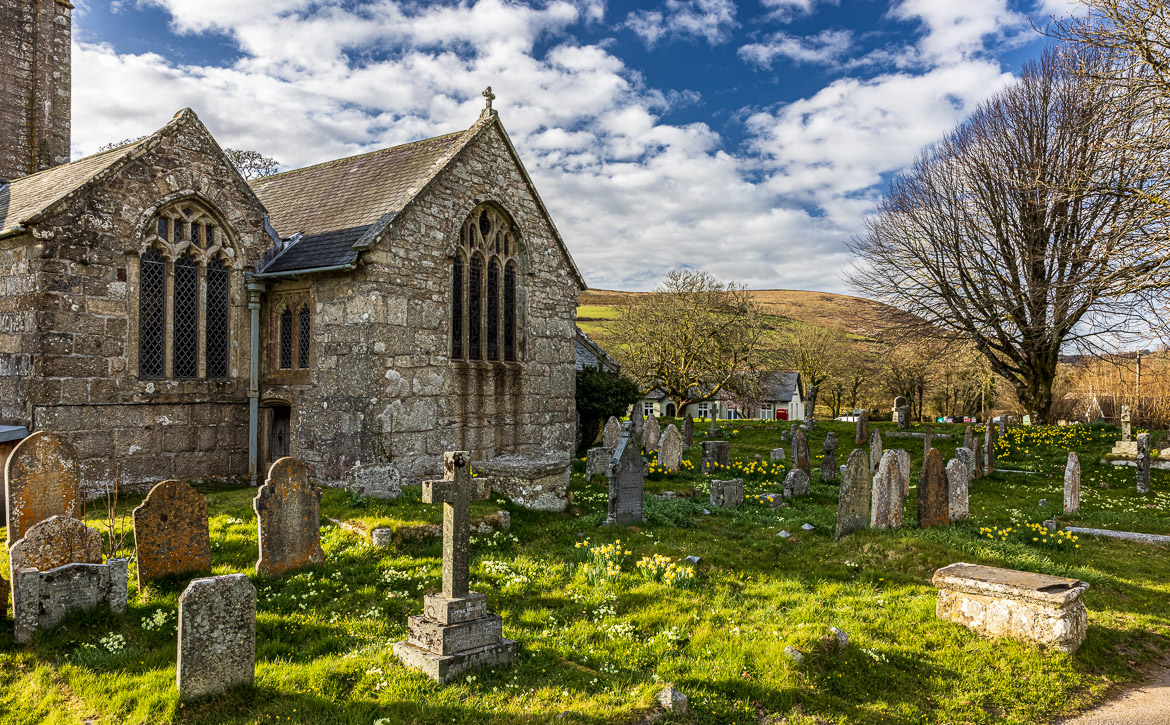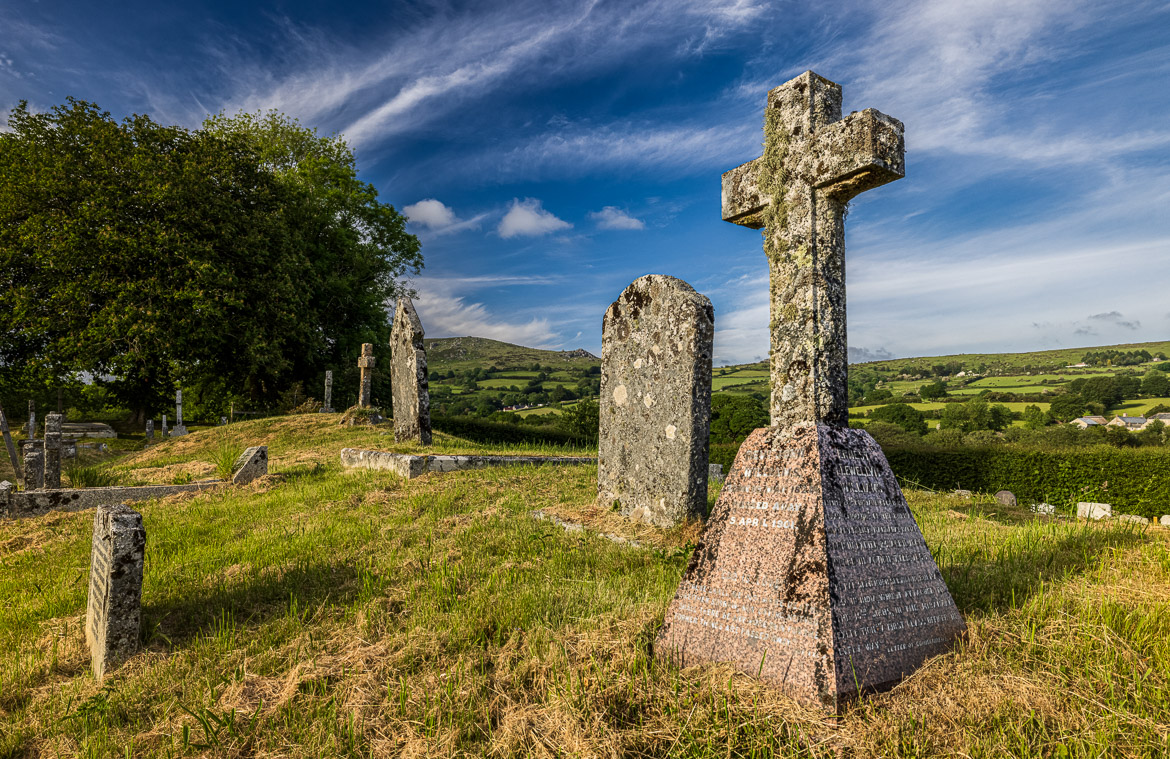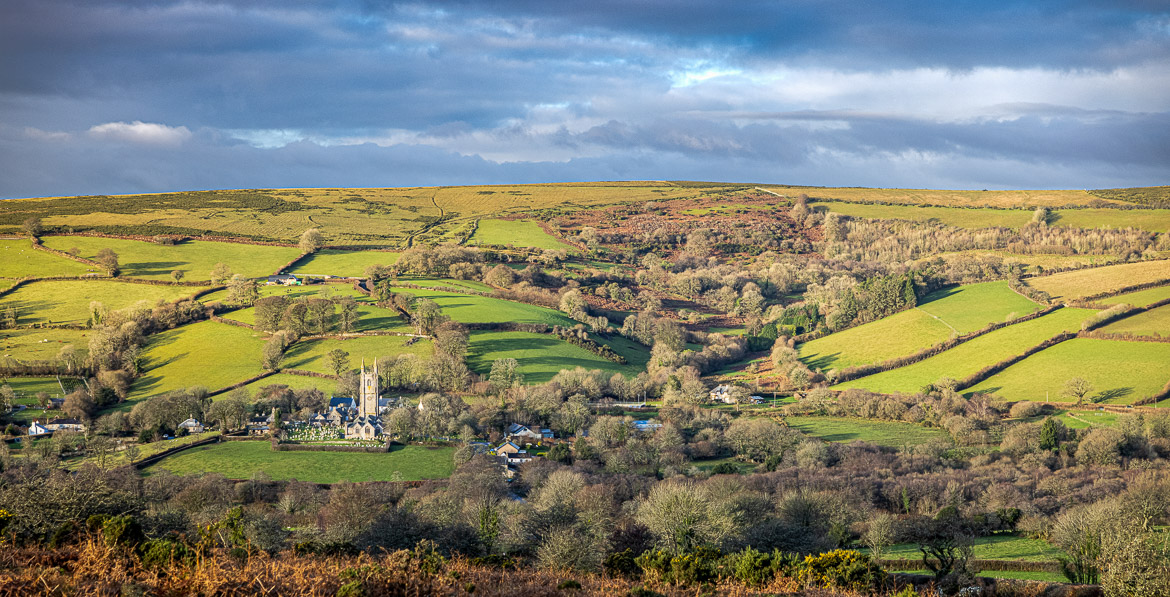
The 14th and 15th century church of St Pancras in Widecombe-in-the-Moor is known as the Cathedral of the Moor due to its size and its striking 130 foot high tower. As becomes a church on Dartmoor, it was built of local granite and its size reflects the prosperity of the tin-mining trade in those centuries. But it has been a church at the site since a lot earlier and the first recorded vicar was John (surname unknown) who served from 1253 to 1258. The first church was probably built of wood, but an earlier stone church was erected in Norman times before the present one.
The church tower was completed later, in around 1500 and was constructed as a “thank offering” by tin miners. On October 21st, 1638, the vicar was conducting an afternoon service, when lightning stroke. A great fiery ball passed through the church and one of the pinnacles of the church tower (see images below) fell down through the roof. Four people died on the spot and many more died later through their injuries. The pinnacle and the roof have since been repaired.
Soon the story told that the church had got a visit from Satan, who was coming to claim a man who had fallen asleep during the service. It was proven because a landlady at Poundsgate, a few miles south of Widecombe-in-the-Moor, had got a visit by a horseman calling for a drink. When he passed the ale through his throat, it sizzled as when water is poured on a hot iron. Then she knew that it was the Devil visiting!
Arriving at Widecombe, the Devil tied his horse to one of the pinnacles at the top of the tower, found his victim asleep in the church pew and dragged him to the top of the tower and then struck the church with a bolt of fire. But the fire not only damaged the church, it also frightened Satan’s horse so much that it bolted and destroyed the pinnacle. And the pinnacle fell down on the roof and that and the firebolt killed some of the parishioners.
And this must be true, because I have researched it myself!
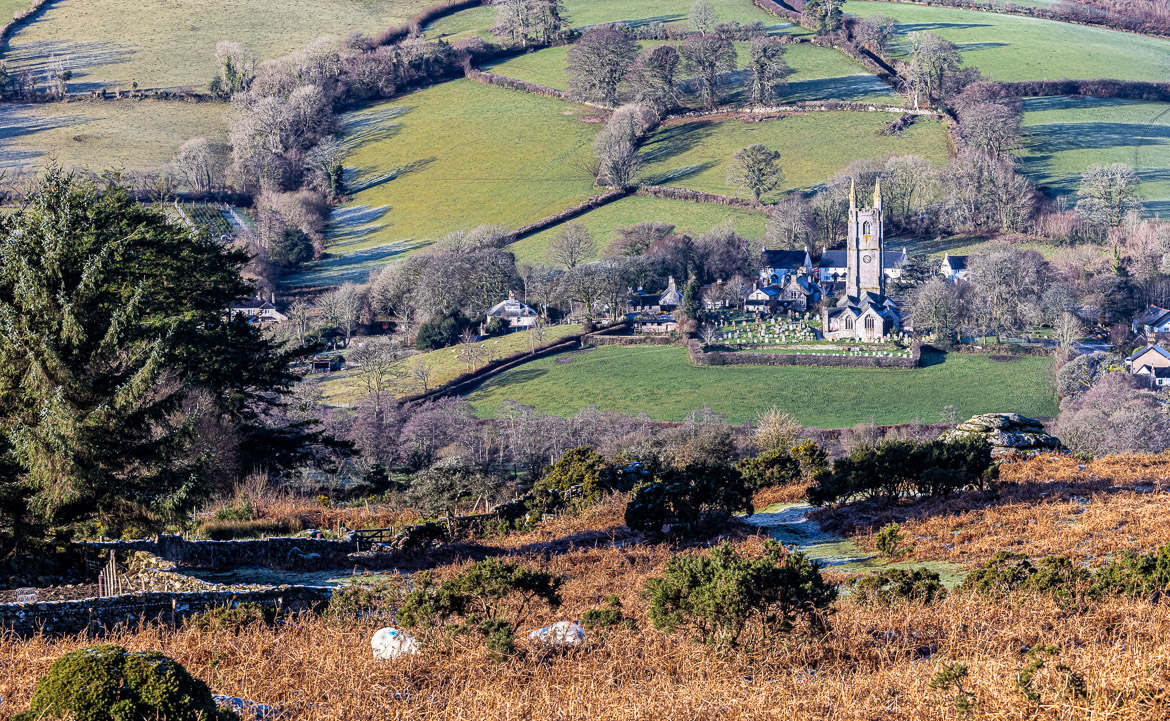
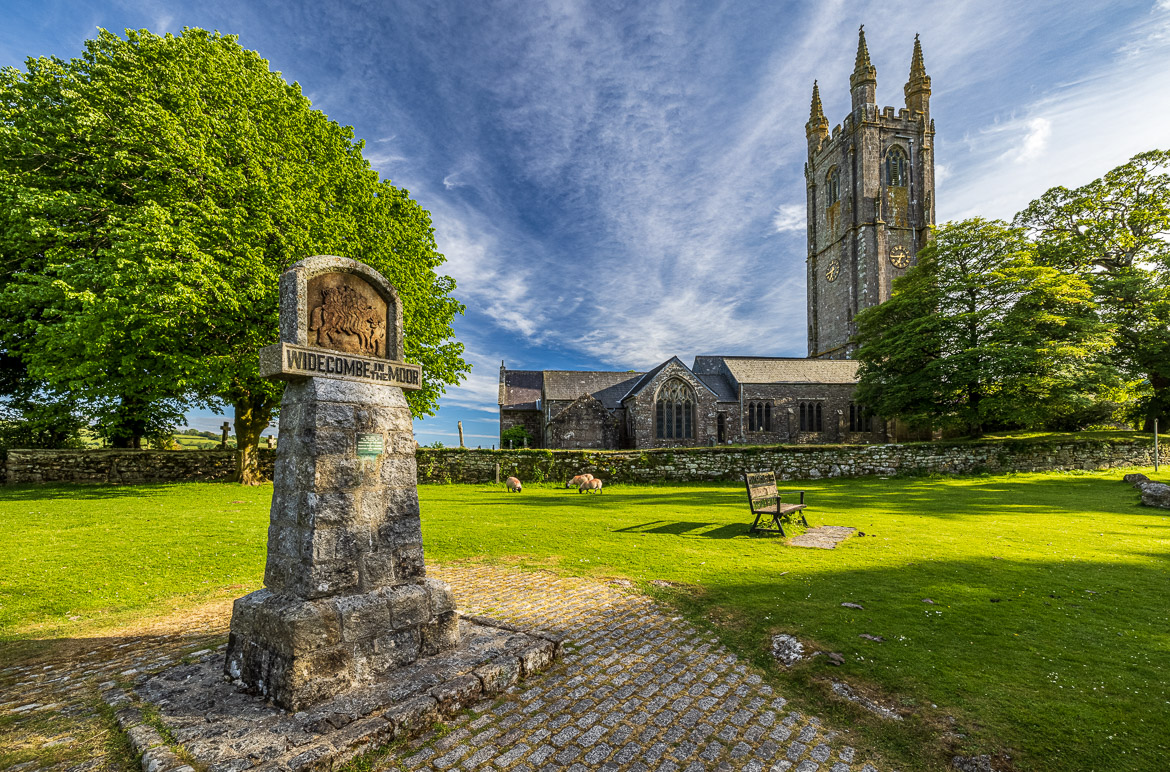
Church houses existed in Britain from around 1450. They were built to accommodate parish festivities and to brew beer for public feasts. Before that it was brewed at the local manor and the profit from brewing belonged to the lord of the manor. In Widecombe-in-the-Moor the Church House that was erected also served another purpose. The size of the parish meant that for centuries families were obliged to walk for miles to go to church. The Church House offered the far-away parishioners an opportunity to stay overnight before or after the Service.
The Church House at Widecombe-in-the-Moor was built around 1540. Like most church houses it has two storeys. The room on the lower floor was used for brewing and the upper for Parish meetings or feasts and for church goers staying overnight. The Church House was erected just outside the churchyard with the eastern wall of the House bordering the church yard. On the front is a little square which also is the entrance to the church yard. And the other long side borders the Village Green. The Church House is now owned by the National Trust.
Because of the proximity of most Church Houses to the Church and the important function as a brewery, Mr Nashe wrote in 1593 that “Hath not the devil his chapel close adjoining Gods Church?“
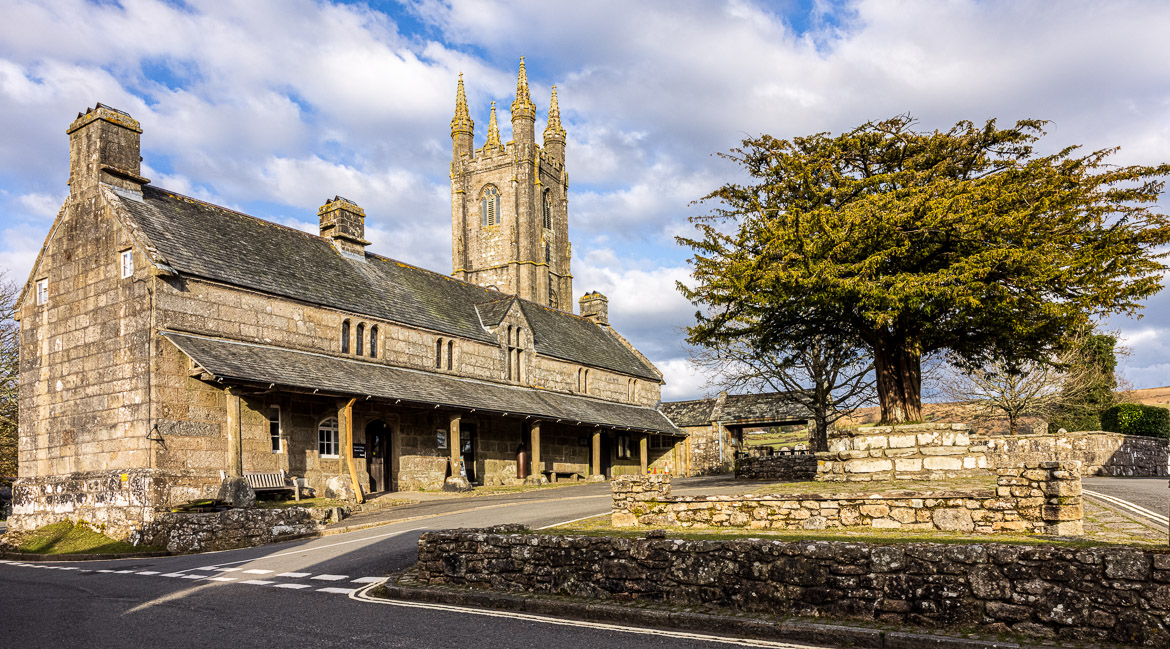
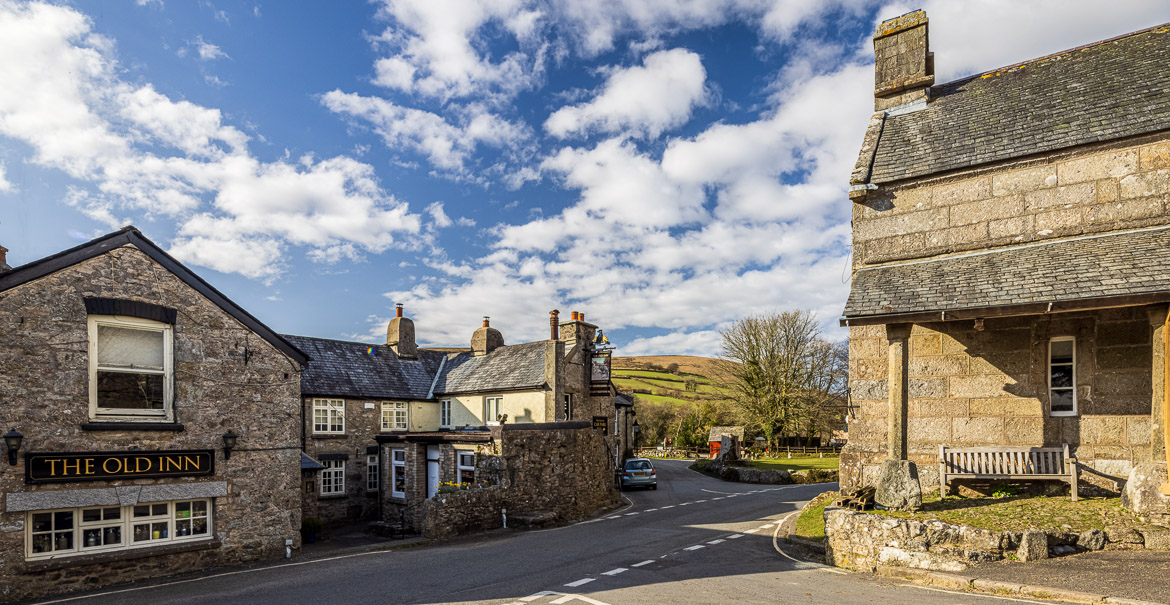
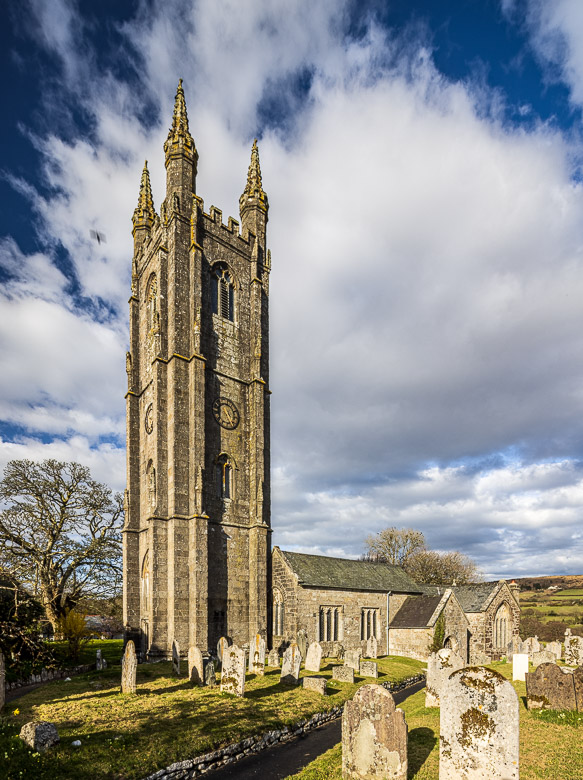
Inside, the Cathedral on the Moor is as imposing as on the outside. A vast space for (nowadays) such a small parish with five magnificent stone pillars either side of the central nave carrying the roof. Both the nave and the two aisles have lovely waggon roofs with roof bosses. There you can find the traditional Green Men but also, at the chancel, the Three Hares (see my previous landscape post about North Bovey and its Church).
The three hares is a very popular symbol in the West Country and appears on at least 15 churches in Dartmoor. They are known as the “tinners’ Rabbits” but its history goes back a lot further than that, as I explained in my North Bovey post. They have been found in 7th century wall paintings in China and in 13th century metalwork from Iran. It is found in Buddhist and Hindu context as well as in Christian and may have been brought to the West via the Silk Road. We don’t know why the tin miners adopted it as “their” symbol.
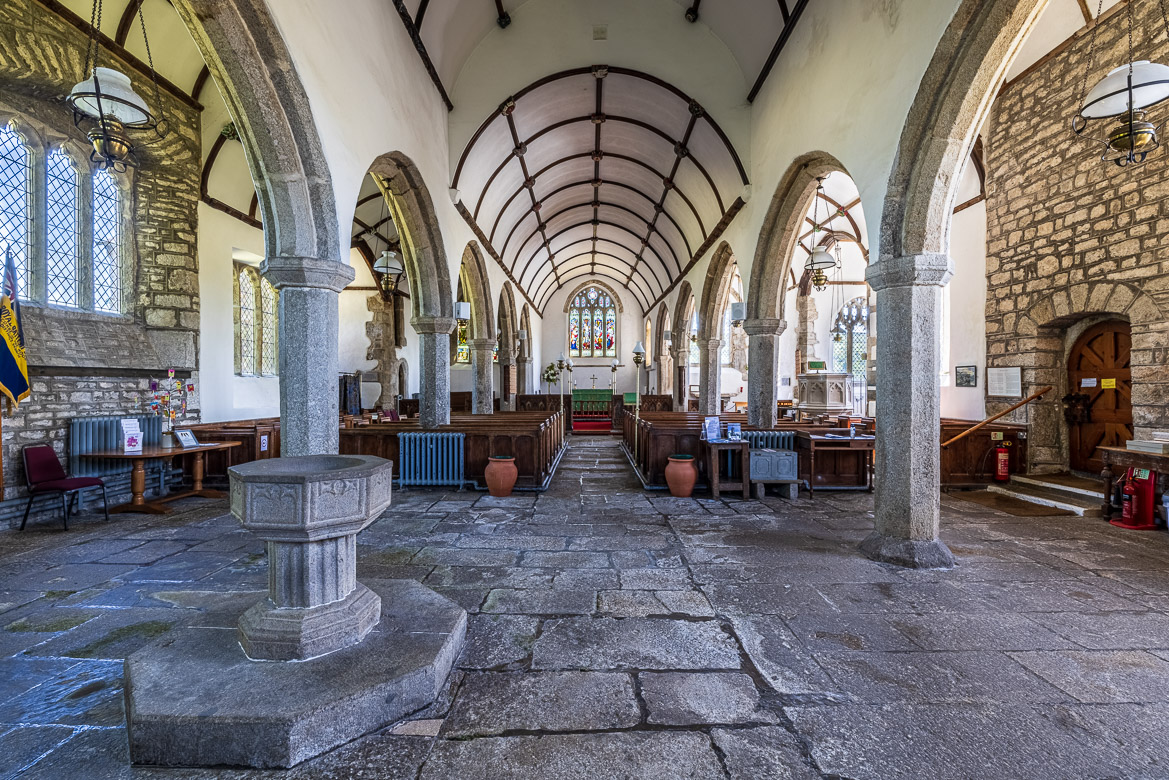
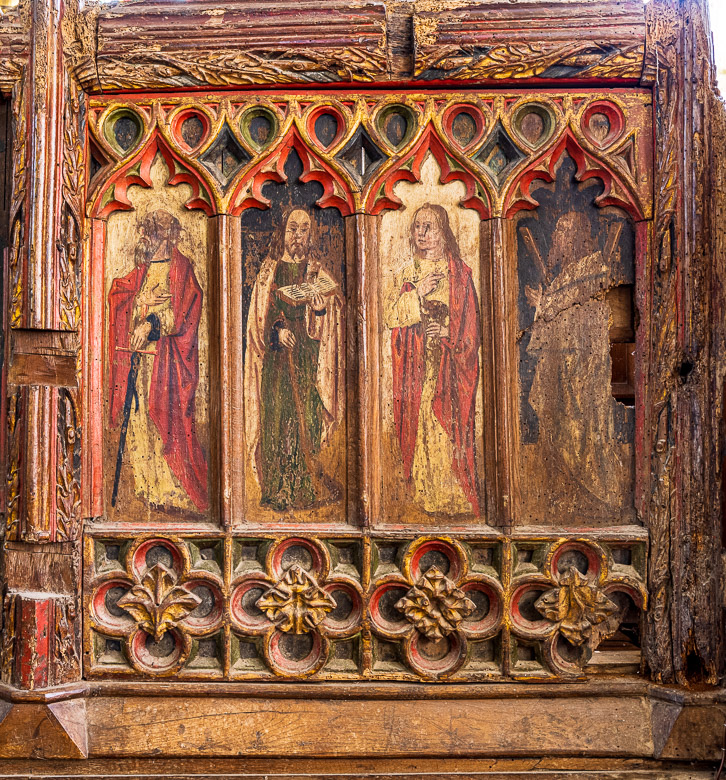
The church and village are set in a valley with the East Webburn River flowing through it, and with the moor towering above it on all sides. The images below are taken from the churchyard showing the views to the northwest and northeast respectively. The first image was taken in March and the second shows the trees covered in their leaves in June.
